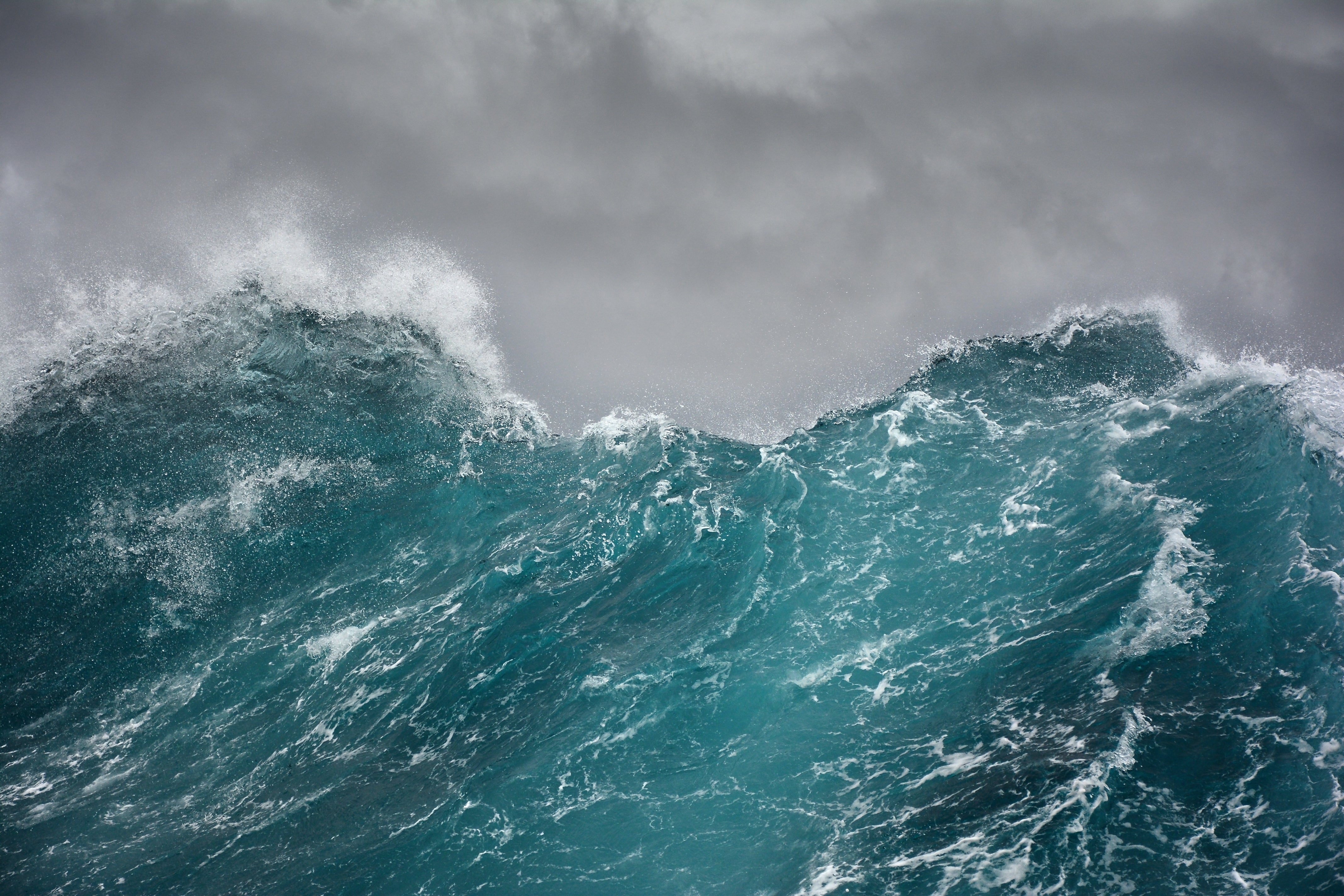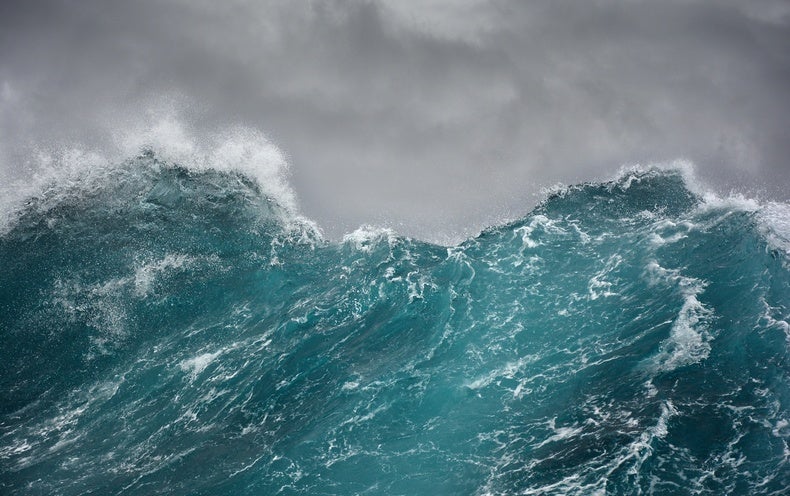
Although most rain on Earth falls over the oceans, lightning at sea is rarer than expected—and for decades, scientists were not sure why. A new study published on Tuesday in Nature Communications suggests salt spray could be getting in the way of clouds charging up for a lightning strike.
Thick clouds that form overhead during storms can become electrified when upward-moving air helps them grow tall enough that the upper parts of the cloud freeze into a mixture of granular, rounded pellets of snow called graupel, and microscopic ice crystals. As these icy particles bump into one another, they transfer electrical charges: the larger graupel tend to become negatively charged, whereas the smaller ice crystals end up with a positive charge.
The positively charged ice crystals are so light that updrafts of air bring them to the top of the cloud, whereas heavier graupel tend to sink. Over time, this separation generates an electrical field between the cloud’s positively charged top and negatively charged bottom. When the charge difference grows big enough, lightning strikes.
When large, water-absorbent particles of sea salt—abundant in ocean spray—are present, however, the tiny droplets that typically condense on microscopic dust and soot to form clouds grow much more rapidly, becoming heavy enough to fall as rain well before the cloud can grow tall enough to charge up. Although this mechanism for dampening lightning at sea has been suggested before, evidence for it had not yet been found in global weather observations. To do that, a team of researchers from China, Israel and the U.S. used global measurements of clouds, lightning strikes and the expected distributions of particles such as pollutants, dust and salt in the atmosphere to watch how cloud systems with different combinations of these particles evolved over time—documenting when and if rainfall and lightning occurred. They found that areas with salt spray see up to 90 percent less lightning.
“We were able to separate the effects of the small particles and the large [sea spray] particles,” says atmospheric scientist and study co-author Daniel Rosenfeld of the Hebrew University of Jerusalem. These effects are often ignored when climate scientists try to predict when and where rain will fall, he adds. “If you don’t take it into account in weather prediction models—and even more so in climate prediction models—you don’t get the picture right, you don’t get the precipitation right,” Rosenfeld says.
But the fine particles, called aerosols, are not the only factor at play in clouds’ complex interior. Other differences in the atmosphere over land and the oceans because of local weather conditions, such as wind and temperature, might also play a role in how much lightning occurs. “It is very challenging to single out the aerosol effect from [these other weather conditions] based on observational analysis only,” says Jiwen Fan, an earth scientist studying interactions between aerosols, clouds, precipitation and climate at the Pacific Northwest National Laboratory. Fan, who was not involved in the new study, suggests that detailed computer modeling of the processes within thick storm clouds would help further clarify the importance of sea salt spray, relative to other weather factors, to determining when and where lightning strikes might occur.

























































